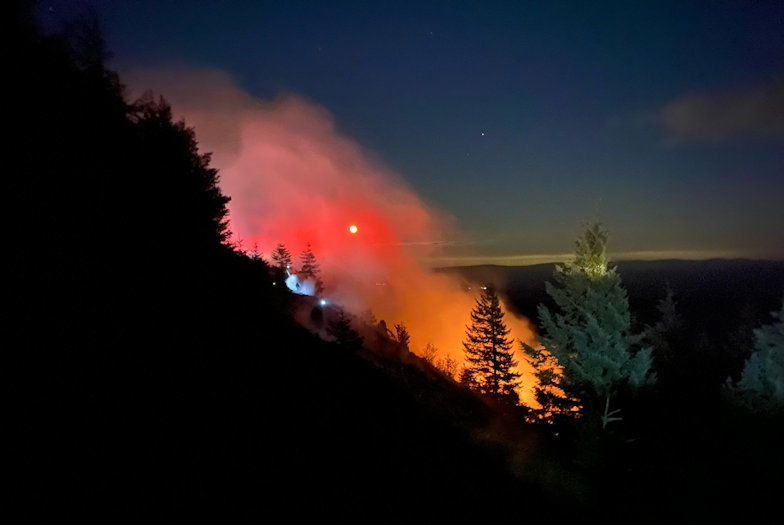‘Kicking butt’: ODF says it’s dousing wildfires quickly this year, thanks to more people and equipment

SALEM, Ore. (KTVZ) — “Frankly, our people have been kicking butt,” said the Oregon Department of Forestry’s Tim Holschbach, Deputy Chief of Policy and Planning for the Fire Protection Division.
As of Monday, ODF said its districts have suppressed 418 fires and held them to 582 acres total. The 10-year average for this point in the fire season is 590 fires and 56,121 acres burned.
“Although there is a possibility for holdover fires from the recent lightning to add fires to the map, ODF’s firefighters have been doing a remarkable job keeping them small,” Holschbach said.
More people have been the key to knocking out fires on lands the department is responsible for protecting, ODF said in a news release Monday afternoon, which continues in full below:
“Investments into the wildfire protection system from Senate Bill 762 allowed us to not only hire additional season firefighters to increase response, but also additional full-time positions to increase response capacity year-round,” said Holschbach. “I can’t say how many millions of dollars in firefighting costs we have saved by being able to quickly suppress these fires—keeping them small, off the landscape and out of our communities.”
A big part of putting out wildfires is detecting them early, and a key part of that effort is the multi-mission aircraft (MMA) that is in its third season of operation. This unique aircraft was made possible through an investment from the Oregon Forest Land Protection Fund—which consists of landowner dollars paid for fire protection each year.
“The MMA has state-of-the-art thermal cameras that overlay that information through an augment reality mapping system,” said Jamie Knight, ODF State Aviation Operations Specialist. “This ‘eyes in the skies’ asset can then feed that information into a firefighting database used statewide called the State of Oregon Fire Situation Analyst system (SOFSA). Our dispatch centers around the state can see those maps and quickly send the best resources to attack the fire.”
Those resources can include ground-based firefighters and equipment, or one or more of the 27 aircraft on exclusive use contracts with the state. The mix of aircraft include eight tankers, five fixed wing detection/aerial supervision aircraft, along with 14 helicopters.
“We have one large tanker, typically based in Medford, Redmond, La Grande or Klamath Falls,” said Knight. “Five wheeled single-engine aircraft that operate from smaller airfields like John Day and Prineville, and then we have two fire boss amphibious aircraft that can scoop up water from nearby lakes.”
The other 21 aircraft are based strategically at airfields around Oregon. Each fire district can request any available aircraft from around the state to aid in putting out fires. This aerial response is often key to reach hard to get at fires in remote areas.
“Our aircraft and other fighting equipment is decentralized to allow each of our fire districts to quickly respond to any fire,” said Holschbach. “But our most valuable asset is our people. They live and work in communities they protect, and they have been doing a great job this fire season.”
For more information on ODF’s firefighting efforts, visit ODF’s Wildfire Blog or follow them on ODF’s Facebook account.